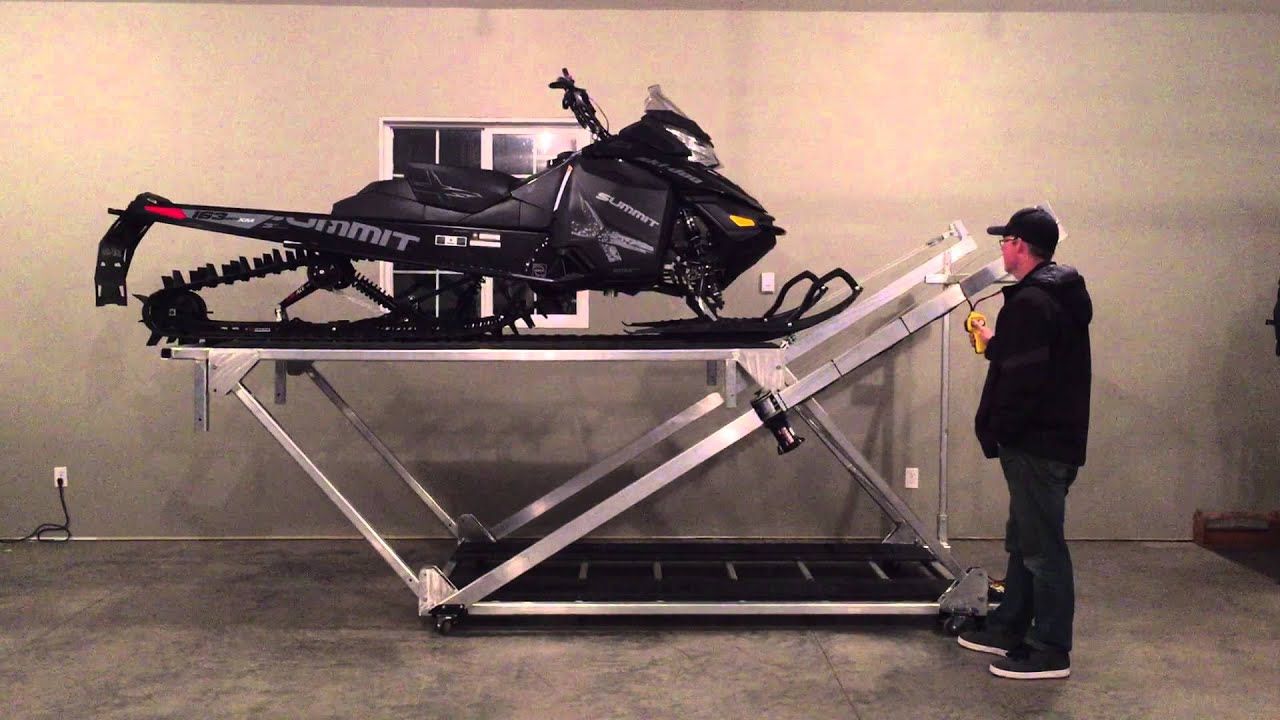

Articles
How To Store A Snowmobile
Modified: January 6, 2024
Learn how to properly store your snowmobile during the off-season with these helpful articles. Get tips on maintenance, storage techniques, and more.
(Many of the links in this article redirect to a specific reviewed product. Your purchase of these products through affiliate links helps to generate commission for Storables.com, at no extra cost. Learn more)
Introduction
Storing a snowmobile properly is crucial for keeping it in top condition and extending its overall lifespan. Whether you’re preparing for the off-season or simply looking to store your snowmobile for an extended period, there are several important steps to follow. This article will guide you through the process of storing a snowmobile, from choosing the right storage location to performing necessary maintenance tasks.
Proper snowmobile storage involves more than just parking it in a garage or shed. Factors such as temperature, humidity, and air circulation can significantly impact your snowmobile’s performance and longevity. By taking the time to prepare and store your snowmobile correctly, you’ll ensure that it’s ready to hit the trails when the next winter season arrives.
In this comprehensive guide, we’ll cover all the essential steps and considerations for storing a snowmobile. From preparing the snowmobile for storage to regular maintenance during the storage period, we’ll provide you with the necessary information to keep your snowmobile in optimal condition.
So, let’s dive in and learn how to store a snowmobile properly, guaranteeing its performance and protecting your investment.
Key Takeaways:
- Proper snowmobile storage involves choosing the right location, preparing the vehicle, and performing regular maintenance to protect your investment and ensure optimal performance when the next winter season arrives.
- Taking proactive measures such as applying corrosion inhibitors, disconnecting the battery, and using a quality cover will safeguard the engine and exterior of your snowmobile, preserving its appearance and preventing potential damage during the storage period.
Read more: How To Store Basil From Store
Choosing the Right Storage Location
When it comes to storing a snowmobile, selecting the appropriate storage location is essential. The ideal storage location should provide protection from the elements and ensure proper ventilation. Here are some factors to consider when choosing the right storage location for your snowmobile:
- Indoor Storage: Whenever possible, store your snowmobile indoors to shield it from rain, snow, and direct sunlight. An enclosed garage, shed, or storage unit is the best option. If you don’t have access to indoor storage, consider using a snowmobile cover specifically designed to protect your vehicle from the elements.
- Temperature Control: Extreme temperatures can take a toll on your snowmobile. Avoid storing it in areas that experience freezing cold temperatures or excessive heat. Fluctuating temperatures can also cause condensation, leading to corrosion. Aim for a storage location with consistent temperatures.
- Ventilation: Good air circulation is crucial for preventing moisture buildup, which can result in mold, mildew, and rust. Make sure the storage space has adequate ventilation to keep the air flowing and prevent stagnant conditions.
- Security: Protect your investment by selecting a storage location that offers security measures. This can include a locked garage or a storage facility with security cameras and controlled access. The more secure the location, the less likely your snowmobile is to be damaged or stolen.
- Accessibility: Consider the convenience of accessing your snowmobile when selecting a storage location. If you plan to use it frequently during the storage period, opt for a location that allows easy access.
By carefully considering these factors, you can choose an ideal storage location that will keep your snowmobile safe and in optimal condition. Remember, the goal is to protect your investment and ensure that your snowmobile is ready for action when the snow starts falling.
Preparing the Snowmobile for Storage
Before you store your snowmobile, it’s crucial to properly prepare it to ensure its longevity and prevent potential issues during the storage period. Follow these steps to properly prepare your snowmobile for storage:
- Clean the Snowmobile: Start by giving your snowmobile a thorough cleaning. Remove any dirt, mud, or debris from the exterior, as well as the skis and tracks. This prevents grime from sitting on the snowmobile’s surfaces for an extended period, which can lead to corrosion or damage over time.
- Lubricate Moving Parts: Apply a light coat of wax or silicone-based protectant to the skis, tracks, and other moving parts. This helps prevent rust and keeps the components in good condition for the duration of the storage period.
- Fog the Engine: Fogging the engine is an essential step to protect its internal components. Follow the manufacturer’s instructions to properly fog the engine. This helps coat the internal surfaces with a protective film that prevents rust and corrosion.
- Change the Oil: It’s recommended to change the oil before storing your snowmobile. Old oil can contain contaminants and break down over time, potentially causing damage to the engine. Fresh oil ensures that the engine is protected throughout the storage period.
- Top Off the Fuel Tank: Fill the fuel tank to the recommended level to help prevent moisture buildup inside. Consider adding a fuel stabilizer to the tank to prevent fuel degradation over time. Run the engine for a few minutes to allow the stabilized fuel to circulate through the system.
- Remove the Battery: If you’re storing your snowmobile for an extended period, it’s best to remove the battery. Store it in a cool, dry place and periodically charge it to maintain its charge level. This prevents the battery from discharging and potentially becoming damaged.
By following these steps, you’ll ensure that your snowmobile is properly prepared for storage. Cleaning and lubricating the machine, fogging the engine, changing the oil, and managing the fuel and battery will help prevent issues and maintain the snowmobile’s performance during its time in storage. Taking the time to prepare your snowmobile now will pay off when you’re ready to hit the trails again.
Fuel and Oil Considerations
When it comes to storing a snowmobile, proper fuel and oil management is crucial. Fuel and oil can degrade over time, leading to performance issues and potential damage to the engine. Follow these fuel and oil considerations to ensure your snowmobile remains in good condition during the storage period:
Fuel:
- Stabilize the Fuel: Adding a fuel stabilizer to the fuel tank before storage is highly recommended. This prevents the fuel from breaking down and becoming stale, reducing the risk of fuel system problems when you start the snowmobile after storage. Make sure to follow the instructions on the stabilizer product for the correct dosage.
- Run the Engine: After adding the fuel stabilizer, run the engine for a few minutes to circulate the stabilized fuel throughout the system. This ensures that the treated fuel reaches all the fuel lines and components, protecting them from corrosion and buildup.
- Top Off the Fuel Tank: Before storing your snowmobile, fill the fuel tank to its recommended capacity. A full tank helps minimize the space for air and moisture inside the tank, reducing the risk of condensation and fuel degradation. However, make sure not to overfill the tank to avoid any fuel spilling out.
Oil:
- Change the Oil: Changing the oil before storing your snowmobile is essential to prevent contaminants from accumulating and potentially damaging the engine. Old oil can also break down over time, losing its lubrication properties. Follow the manufacturer’s recommendations for the correct type and viscosity of oil to use when changing it.
- Inspect the Oil Filter: Along with an oil change, consider inspecting and replacing the oil filter if necessary. A clean oil filter prevents any debris from circulating in the engine, ensuring proper lubrication during storage and when you use the snowmobile again.
- Check Coolant Levels: Depending on the type of snowmobile you have, it may also have a coolant system. Check the coolant levels and the condition of the coolant. If necessary, drain and refill the cooling system according to the manufacturer’s instructions.
By properly managing fuel and oil, you’re taking important steps to protect your snowmobile’s engine and fuel system during the storage period. Stabilizing the fuel, running the engine, topping off the fuel tank, changing the oil, inspecting the oil filter, and checking the coolant levels will ensure that your snowmobile is primed for optimal performance when you’re ready to use it again.
Draining the Cooling System
As part of the snowmobile storage process, it’s important to properly drain and prepare the cooling system. Draining the cooling system helps prevent potential damage from freezing temperatures and ensures that the system remains in good condition throughout the storage period. Here’s how to effectively drain the cooling system of your snowmobile:
- Consult the Manual: Start by referring to your snowmobile’s manual for specific instructions on how to drain the cooling system. Different models and manufacturers may have different procedures, so it’s essential to follow the manufacturer’s guidelines.
- Locate the Drain Plug: Locate the cooling system drain plug, which is usually located at the lowest point of the cooling system. This plug allows the coolant to drain out effectively.
- Prepare a Container: Place a suitable container or drain pan underneath the drain plug to collect the coolant as it drains out. Make sure the container has enough capacity to hold all the coolant that will be drained from the system.
- Open the Drain Plug: Gently unscrew the drain plug using the appropriate tools, being careful not to damage or lose the plug. Once the plug is open, the coolant will start to flow out of the system and into the container.
- Allow the Coolant to Drain: Allow the coolant to completely drain out of the system. You may need to wait for a few minutes to ensure that all the coolant has been removed. Slightly tilting the snowmobile can help facilitate the draining process.
- Inspect the Coolant: While draining the coolant, take the opportunity to inspect its condition. If the coolant appears dirty or contains debris, it may be a sign of a cooling system issue that needs attention. In such cases, consult a professional for further inspection and maintenance.
- Replace the Drain Plug: Once all the coolant has been drained, carefully screw the drain plug back into place. Ensure it is securely fastened but avoid overtightening, as it may cause damage to the drain plug or cooling system.
By following these steps, you’ll effectively drain the cooling system of your snowmobile, preventing any potential freezing and damage. Remember to handle the coolant with care, as it may be toxic. If you’re unsure or uncomfortable performing the task yourself, it’s always best to consult a qualified technician to ensure proper draining and maintenance of your snowmobile’s cooling system.
Read more: How To Store Store-Bought Bread
Protecting the Engine
The engine is the heart of your snowmobile, and protecting it during the storage period is essential for maintaining its performance and longevity. Taking the necessary steps to safeguard the engine will ensure that it’s protected from potential corrosion and damage. Here are some proven methods to protect the engine of your snowmobile:
- Apply a Corrosion Inhibitor: Before storing your snowmobile, apply a corrosion inhibitor to critical engine components. This helps create a protective barrier against moisture and oxidation. Focus on areas such as the cylinders, pistons, and any exposed metal surfaces.
- Remove Spark Plugs: Removing the spark plugs from the engine is highly recommended during storage. This prevents potential issues caused by moisture or rust buildup. After removing the spark plugs, add a small amount of oil into each cylinder and turn the engine over a few times to distribute the oil and coat the cylinder walls.
- Protect Electrical Components: Electrical components, such as the ignition system and wiring harness, should be protected from moisture and potential damage. Use dielectric grease to coat electrical connections and protect them from corrosion. Additionally, consider wrapping exposed wires with electrical tape or using zip ties to secure them and prevent them from getting damaged during storage.
- Check Belt Tension: Check the belt tension and condition before storage. If the belt is worn or loose, it may need to be replaced. A worn or loose belt can cause issues when starting the snowmobile after storage. If necessary, adjust or replace the belt to ensure proper functioning.
- Inspect Hoses and Fuel Lines: Take the time to inspect the hoses and fuel lines for any signs of damage or wear. If you notice any cracks, leaks, or deterioration, it’s essential to replace them before storing the snowmobile. Damaged hoses or fuel lines can lead to fuel system problems when you try to start the engine after storage.
- Block the Exhaust Outlet: To prevent rodents or insects from entering the exhaust system, block the exhaust outlet using a clean cloth or something similar. This helps keep the engine protected and prevents any unwanted visitors during storage.
By following these steps, you’ll effectively protect the engine of your snowmobile. Applying a corrosion inhibitor, removing the spark plugs, protecting electrical components, checking belt tension, inspecting hoses and fuel lines, and blocking the exhaust outlet will help keep your snowmobile’s engine in top shape and ready to go when the storage period is over.
When storing a snowmobile, be sure to clean and dry it thoroughly to prevent rust and corrosion. Add fuel stabilizer to the tank and remove the battery for indoor storage. Cover the snowmobile with a breathable, waterproof cover to protect it from dust and moisture.
Cleaning and Drying the Snowmobile
Properly cleaning and drying your snowmobile before storage is an essential step to maintain its appearance and prevent corrosion. Dirt, grime, and moisture can cause damage to the exterior and components if they are left untreated. Follow these steps to thoroughly clean and dry your snowmobile before storing it:
- Remove Excess Dirt and Debris: Start by removing any dirt, mud, or debris from the exterior of the snowmobile. Use a soft brush or cloth to gently brush away loose dirt. Pay attention to hard-to-reach areas and crevices where dirt can accumulate.
- Wash the Snowmobile: Use a mild detergent mixed with water to wash the snowmobile. Avoid using harsh chemicals or abrasive cleaners that can damage the paint or finish. Gently scrub the surfaces with a sponge or cloth, paying extra attention to areas that are particularly dirty or greasy.
- Clean the Skis and Tracks: Thoroughly clean the skis and tracks of your snowmobile. Use a plastic scraper or brush to remove any built-up snow or ice. Inspect the skis and tracks for any signs of damage or wear. If necessary, replace worn parts to ensure optimal performance.
- Dry the Snowmobile: After washing, use a clean and dry cloth to remove excess water from the snowmobile. Pay attention to areas where water can accumulate, such as around the suspension, engine, and electrical components. Allow the snowmobile to air dry completely before moving on to the next steps.
- Apply a Protective Wax: Once the snowmobile is dry, apply a protective wax or sealant to the exterior surfaces. This helps create a barrier against moisture and protects the paint and finish. Follow the instructions on the wax product for the correct application method.
- Lubricate Moving Parts: Apply a light coat of lubricant to the moving parts of the snowmobile, such as hinges, pivots, and suspension components. This helps prevent rust and keeps the parts in good condition during storage.
By properly cleaning and drying your snowmobile, you’re taking proactive measures to maintain its appearance and prevent corrosion. Removing excess dirt and debris, washing the snowmobile, cleaning the skis and tracks, drying thoroughly, applying a protective wax, and lubricating moving parts will ensure that your snowmobile looks great and stays protected during the storage period.
Storing the Snowmobile
Once you have properly prepared your snowmobile, it’s time to store it in a safe and secure location. Proper storage is crucial for protecting your snowmobile from external elements and potential damage. Follow these steps to store your snowmobile effectively:
- Elevate the Snowmobile: If possible, elevate the snowmobile off the ground using a stand or dolly. This helps prevent flat spots from forming on the tracks during long periods of inactivity.
- Position the Snowmobile: Park the snowmobile in a position where it is stable and balanced. Make sure it is on a level surface to prevent any accidents or damage while it’s in storage.
- Disconnect the Battery: If you haven’t already done so, disconnect the battery from the snowmobile. This helps prevent the battery from discharging and potentially becoming damaged during the storage period. Store the battery in a cool and dry place, periodically charging it to maintain its charge level.
- Secure the Snowmobile: Use straps or tie-downs to secure the snowmobile in place. This provides additional stability and prevents any movement or shifting while it’s in storage.
- Remove Valuables and Sensitive Items: Remove any valuables, such as GPS devices or personal items, from the snowmobile. Store them separately in a safe place to prevent theft or damage.
- Open Air Vents: Ensure that the air vents on the snowmobile are open and not obstructed. This helps promote air circulation and prevents moisture buildup.
- Place a Moisture Absorber: To protect your snowmobile from moisture, place a moisture absorber, such as silica gel packs or dehumidifier products, inside the storage area. This helps maintain a dry environment and prevents corrosion.
By following these steps, you’ll be able to store your snowmobile in a secure and well-prepared manner. Elevating the snowmobile, positioning it correctly, disconnecting the battery, securing the snowmobile, removing valuables, opening air vents, and using a moisture absorber will ensure that your snowmobile remains in optimal condition during the storage period.
Covering and Securing the Snowmobile
After properly storing the snowmobile, it’s essential to cover and secure it to provide additional protection from dust, debris, and potential damage. A quality cover helps shield the snowmobile from the elements and prevents any unwanted pests from entering. Here’s how to effectively cover and secure your snowmobile:
- Select a Quality Cover: Choose a cover specifically designed for snowmobiles. Look for a cover made from a durable, weather-resistant material that provides a snug fit. A cover with built-in ventilation can also help prevent moisture buildup.
- Clean and Dry the Snowmobile: Before covering the snowmobile, ensure that it is clean and dry. This prevents any dirt or moisture from getting trapped between the cover and the snowmobile’s exterior, potentially causing damage over time. Refer to the previous section on cleaning and drying the snowmobile for detailed instructions.
- Position the Cover: Place the cover over the snowmobile, starting from the front and working your way to the back. Make sure the cover fits snuggly and covers the entire snowmobile, including the skis, tracks, and any accessories. Secure any straps or buckles to ensure a tight fit.
- Avoid Contact with Sharp Edges: Take care to position the cover in a way that avoids contact with any sharp edges or protrusions on the snowmobile. This prevents the cover from tearing or getting damaged.
- Secure the Cover: Once the cover is positioned, secure it to prevent it from getting blown off or moved during storage. Use hooks, bungee cords, or any fastening mechanism provided with the cover to keep it in place.
- Periodically Check the Cover: During the storage period, periodically check the cover to ensure it remains securely in place and is not damaged. If you notice any tears or signs of wear, repair or replace the cover as needed.
By properly covering and securing your snowmobile, you’re adding an extra layer of protection during the storage period. Using a quality cover, ensuring the snowmobile is clean and dry, positioning the cover properly, avoiding contact with sharp edges, securing the cover, and periodically checking its condition will help maintain your snowmobile’s appearance and prevent any potential damage.
Read more: How To Store Basil From Grocery Store
Regular Maintenance During Storage
Even though your snowmobile is in storage, it is still important to perform regular maintenance tasks to ensure its optimal performance and prevent any issues that may arise during the storage period. Here are some key maintenance tasks to consider:
- Keep the Snowmobile Clean: Regularly clean the snowmobile while it is in storage to prevent dirt, dust, and grime from accumulating. Use a soft cloth or brush to wipe down the surfaces and remove any debris. Keeping the snowmobile clean helps maintain its appearance and prevents potential damage.
- Inspect for Damage: Perform regular visual inspections to check for any signs of damage or wear. Look for cracks, corrosion, or loose parts. If you notice any issues, address them promptly or consult a professional for further assessment and repair.
- Check the Suspension: Periodically check the suspension of the snowmobile for any signs of wear or damage. Ensure that it is properly lubricated and functioning smoothly. Address any issues or abnormalities to maintain optimal performance.
- Lubricate Moving Parts: Apply lubrication to the moving parts of your snowmobile at regular intervals. Pay attention to hinges, pivots, throttle cables, and other components that require lubrication. Proper lubrication prevents rust and ensures that the parts continue to operate smoothly.
- Rotate the Track: If your snowmobile is stored for an extended period, consider rotating the track periodically. This helps prevent flat spots from forming and maintains the track’s flexibility and performance.
- Check Tire Pressure: If your snowmobile has tires, regularly check the tire pressure during storage. Proper tire pressure helps prevent flat spots and ensures optimal traction when you’re ready to use the snowmobile again.
- Monitor Fuel and Fluid Levels: Check the fuel and fluid levels of your snowmobile at regular intervals. If necessary, top up the fuel and fluids to the recommended levels. This helps prevent moisture buildup and keeps the internal components protected.
- Keep the Storage Area Clean: Ensure that the storage area itself remains clean and free from any potential hazards. Regularly sweep or vacuum the area to prevent dust or debris buildup. Additionally, keep the storage area well-ventilated and check for any signs of pests.
By conducting regular maintenance tasks during the storage period, you’re taking proactive steps to ensure that your snowmobile remains in optimal condition. Keeping the snowmobile clean, inspecting for damage, checking the suspension, lubricating moving parts, rotating the track, monitoring fuel and fluid levels, and maintaining a clean storage area will help preserve your snowmobile’s performance and appearance.
Final Tips and Recommendations
As you prepare to store your snowmobile, here are some final tips and recommendations to keep in mind to ensure a successful and problem-free storage period:
- Documentation: Keep all documentation related to your snowmobile, including the owner’s manual, maintenance records, and any warranties or service contracts. Having these documents readily available will be helpful for future reference or in case any issues arise.
- Insurance Coverage: Check with your insurance provider to ensure that your snowmobile is adequately covered during the storage period. Adjust your policy if necessary to avoid any potential gaps in coverage.
- Rodent Prevention: Take measures to prevent rodents and other pests from nesting in or damaging your snowmobile. Place rodent repellents or traps near the storage area and ensure that the storage space is properly sealed to prevent these unwanted visitors.
- Regular Check-Ins: It’s a good idea to check on your snowmobile periodically during the storage period. This allows you to ensure that it remains in good condition and address any issues that may arise promptly.
- Consider Professional Storage: If you don’t have suitable storage facilities or if you want to ensure optimal conditions for your snowmobile, consider professional storage services. These facilities are designed specifically for snowmobile storage and provide controlled environments to protect your investment.
- Follow Manufacturer’s Recommendations: Always refer to the manufacturer’s recommendations and guidelines for storage and maintenance procedures. These instructions are specific to your snowmobile model and take into account any unique considerations or requirements.
- Preparation for Next Season: As the storage period nears its end, start preparing for the next season. Perform any necessary maintenance tasks, such as changing fluids or replacing worn parts, in advance so that your snowmobile is ready to hit the trails when the time comes.
By implementing these tips and recommendations, you can ensure that your snowmobile is properly stored and well-maintained throughout the storage period. Proper documentation, insurance coverage, rodent prevention, regular check-ins, professional storage, following manufacturer’s recommendations, and prepping for the next season will give you peace of mind and set your snowmobile up for a successful and enjoyable riding experience in the future.
Conclusion
Storing a snowmobile properly is essential for preserving its performance, appearance, and longevity. By following the steps outlined in this guide, you can ensure that your snowmobile remains in optimal condition during the storage period and is ready to hit the trails when the time comes.
From choosing the right storage location to performing regular maintenance tasks, each step plays a crucial role in protecting your investment. Selecting an appropriate storage location, properly preparing the snowmobile by cleaning, lubricating, and draining systems, and securing the snowmobile with a cover are essential for preventing damage from the elements and keeping pests at bay.
Regular maintenance during storage, such as cleaning, inspecting for damage, lubricating moving parts, and checking fluid levels, ensures that your snowmobile remains in top shape and prevents any issues from arising. Additionally, following manufacturer’s recommendations, keeping documentation, considering insurance coverage and rodent prevention, and periodically checking on the snowmobile are important to maintain its value and functionality.
As the storage period nears its end, make sure to properly prepare for the next season by performing any necessary maintenance tasks, such as changing fluids or replacing worn parts. This will ensure that your snowmobile is ready for action when the snow starts falling once again.
Remember, proper snowmobile storage is not just about parking it in a garage or shed. It involves careful preparation, maintenance, and protection to keep your snowmobile in optimal condition. By investing time and effort into storing your snowmobile correctly, you can enjoy many seasons of thrilling rides on the snow.
So, follow the steps outlined in this guide, adhere to manufacturer’s recommendations, and take the necessary precautions to ensure the longevity and performance of your snowmobile. Happy riding!
Frequently Asked Questions about How To Store A Snowmobile
Was this page helpful?
At Storables.com, we guarantee accurate and reliable information. Our content, validated by Expert Board Contributors, is crafted following stringent Editorial Policies. We're committed to providing you with well-researched, expert-backed insights for all your informational needs.



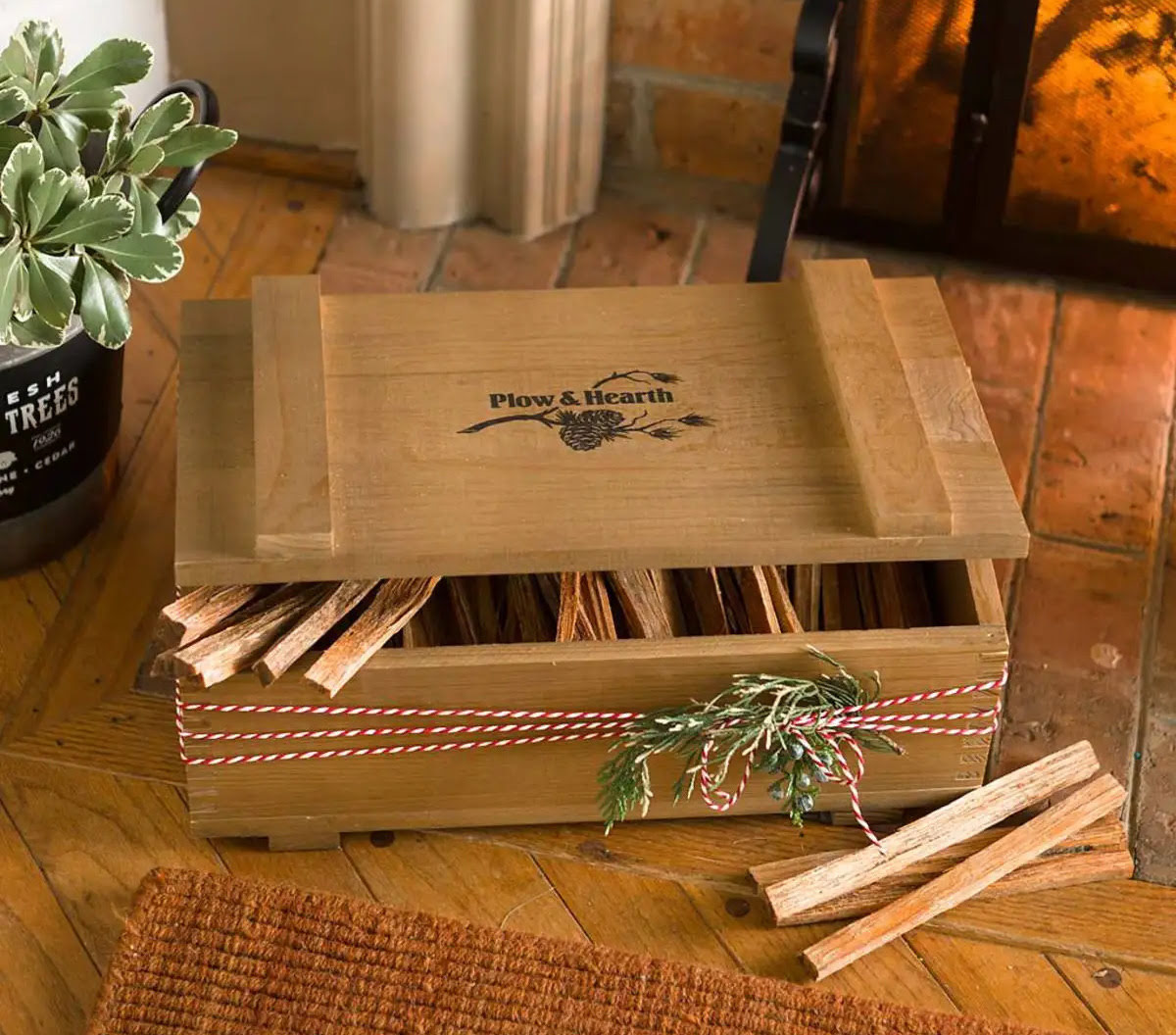



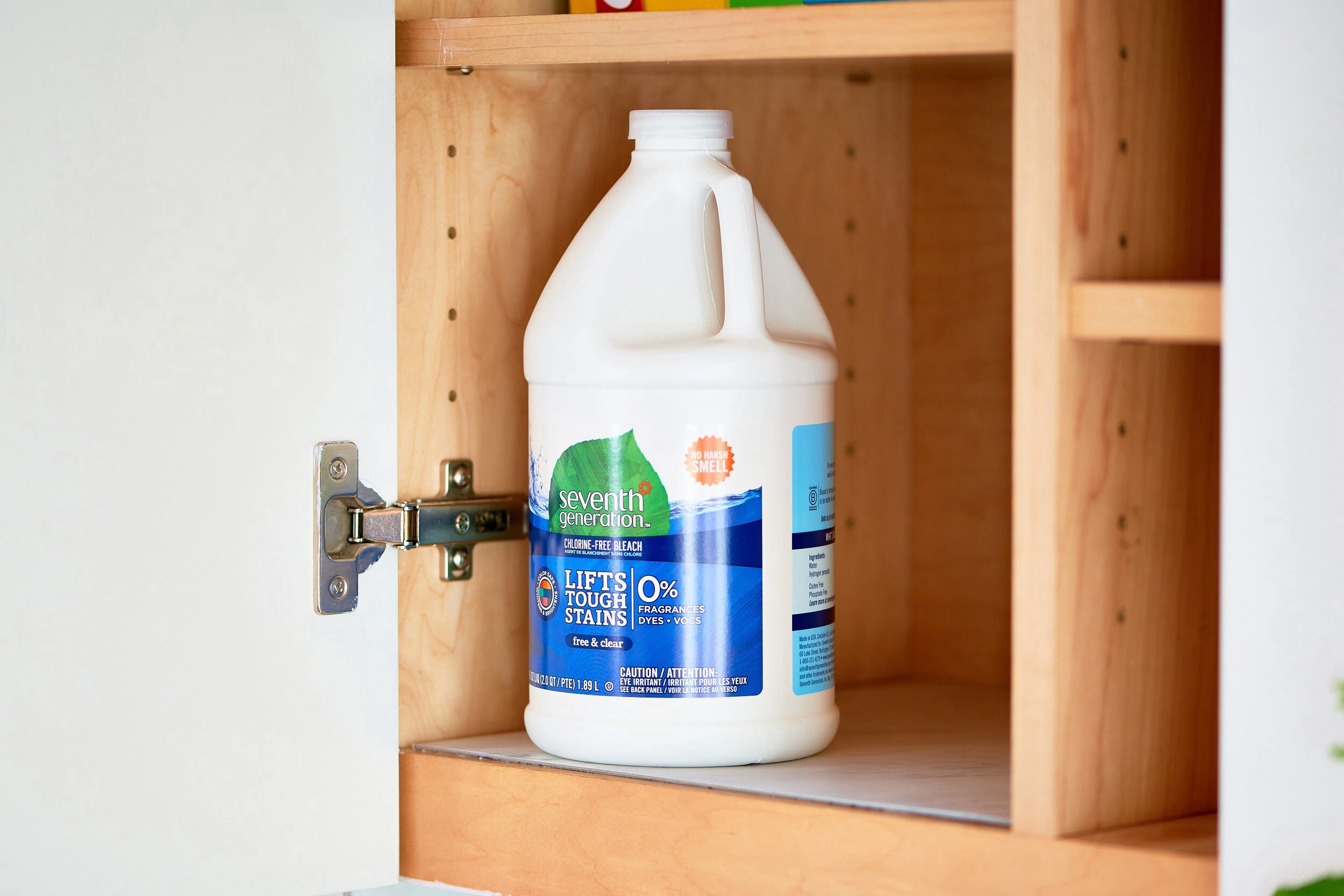

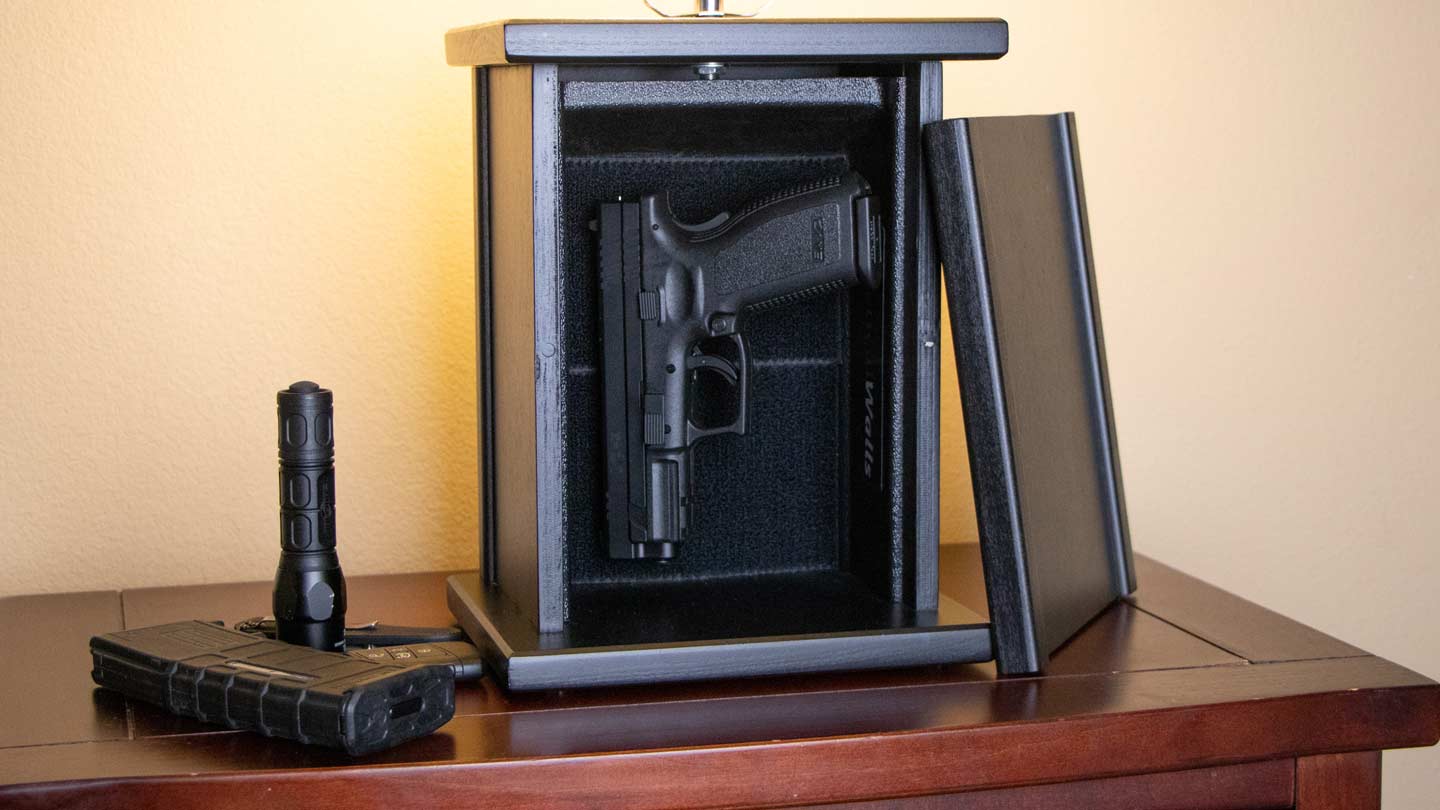
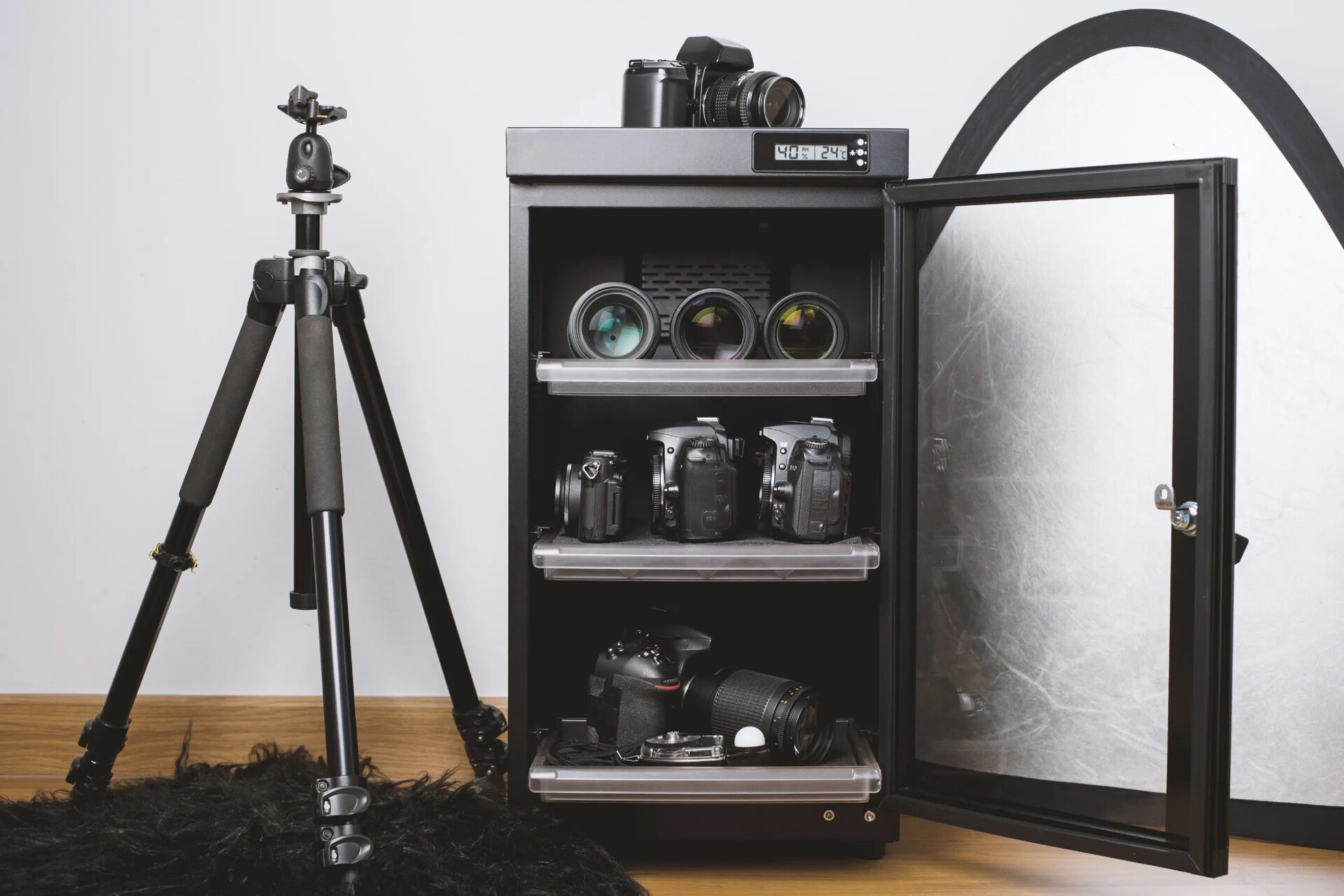
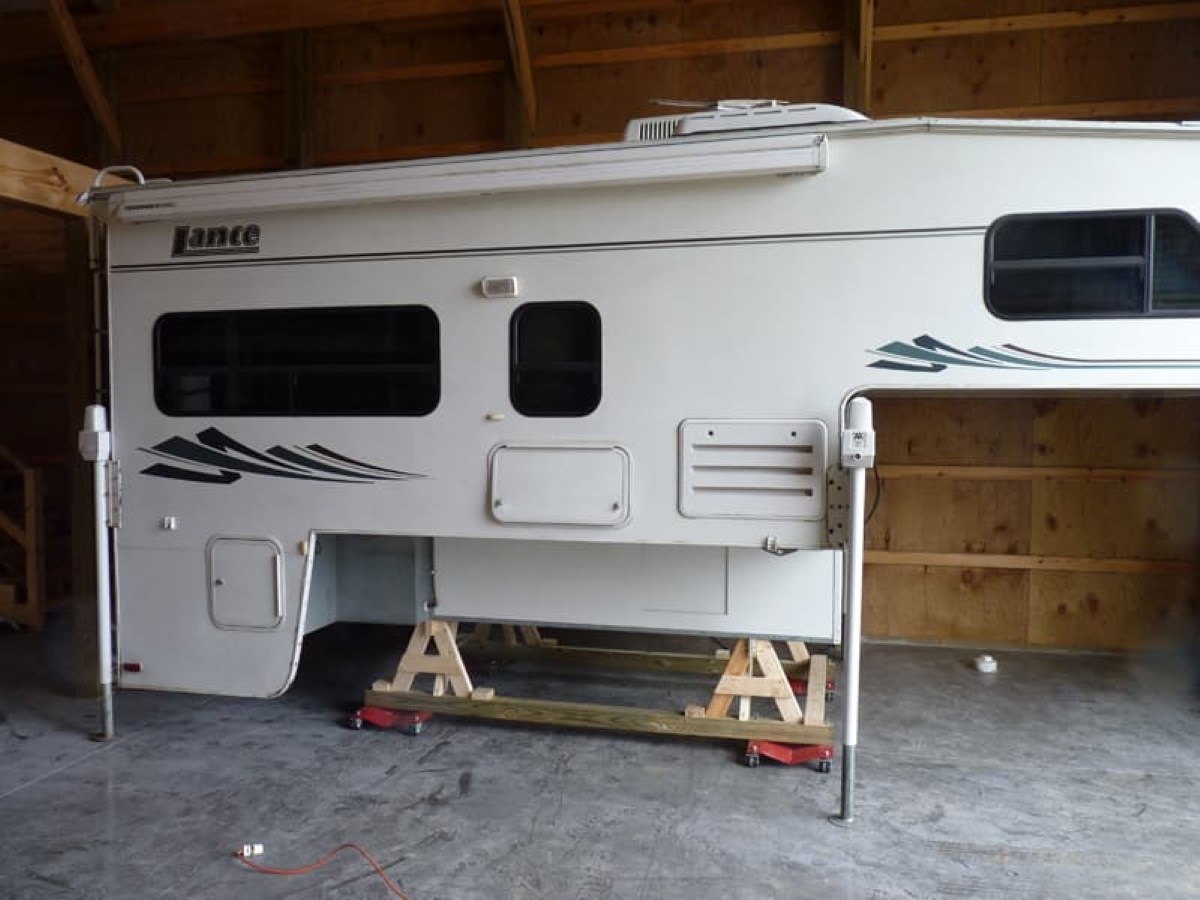


0 thoughts on “How To Store A Snowmobile”